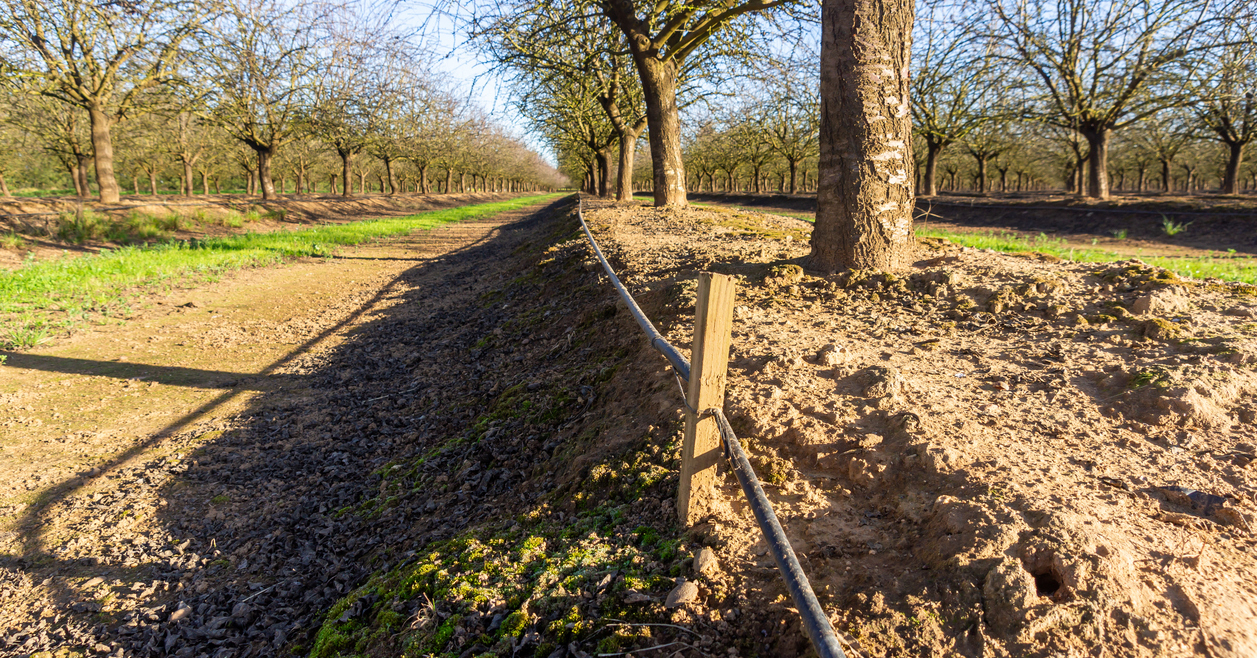Storm Season Is Here! Here’s How You Can Prepare Your Trees
March winds, April showers, bring forth … thunderstorms, wind, and heavy rain in the Southeast throughout the summer that can be potentially damaging to your trees!
Luckily there are several things you can do in advance of storm season to help shore up your saplings and tend to all the trunks in your yard.
Be Vigilant About the Basics
General care throughout the year will help keep your trees strong and healthy — the best way to help them survive severe weather.
Watering
Trees usually get the water they need from natural rainfall. But as the University of Georgia Extension reminds us, “Periodic droughts can be devastating. Going weeks without moisture can create problems for trees, especially those with small soil moisture reservoirs (i.e., limited root zones).” If your lawn looks puny during a time of dryness, most likely your trees will need a healthy drink, too. We have more specific watering advice for you here.
Mulching
Mulching is another way to help the soil around your trees retain not only moisture, but also important nutrients. Whether composed of wood chips, shredded leaves, and/or pine straw, make sure your mulch is spread to the edges of a tree’s drip canopy, but never — as Georgia Gardening expert Walter Reeves cautions — piled up high around a tree’s trunk.
Weeding
Another benefit of mulch is that it can help prevent the growth of weeds and other small ground plants or saplings that might compete with your tree for moisture and other nutrients. If you decide not to mulch around your trees, make sure to keep the area around the base clear by pulling up weeds regularly.
The Importance of Trimming & Pruning
Proper trimming and pruning removes unwanted dead, decaying, or dying branches. A regular trim can also reduce any potential hazards such as low-hanging branches, or damaged limbs that could fall during a storm. For smaller and easy to reach branches, you may be able to do the work yourself, but we recommend hiring an expert for anything beyond that.
Similar to trimming, pruning gets rid of parts of the tree that may be dead or damaged,
but proper pruning can also keep a tree healthy by:
● Controlling or directing new growth
● Preventing the spread of disease
● Correcting weak or narrow crotches in the tree
● Improving air circulation and allowing light to shine through
If you’re unsure about your trees’ overall health, or what trimming might be necessary, we recommend you have them inspected by an arborist or other tree professional.
To Brace and Cable (or Not): A Careful Question
A specialized process used only to protect mature trees, cabling and bracing should always be prescribed and installed by an expert, as improper installation can lead to tree destruction. The process involves installing cables, metal rods, or both, in order to hold branches together or upright, to keep the crown together, or to prevent tree splitting. The University of Georgia Extension recommends that cabling or bracing should be seen and utilized only as a final attempt to save a tree.
If Damage Does Occur
Even after the best precautions, storm damage can and may still happen. The Georgia Arborist Association provides some advice on how to handle damaged trees, and we at Premier Tree Solutions are also at the ready to keep your trees — and your home and family — safe.
If you have any questions about the potential risk for any storm damage to your trees, we have three Certified Arborists on staff, and would be happy for you to reach out to us online or give us a call at 404.252.6448.







